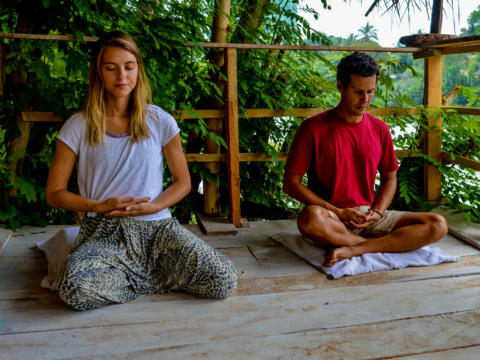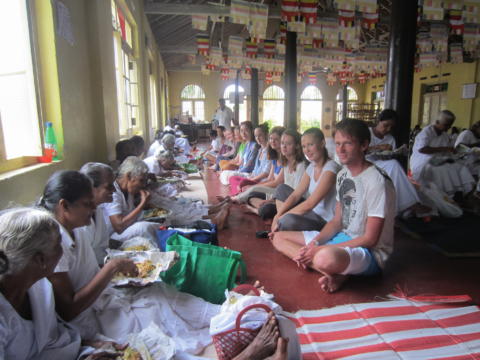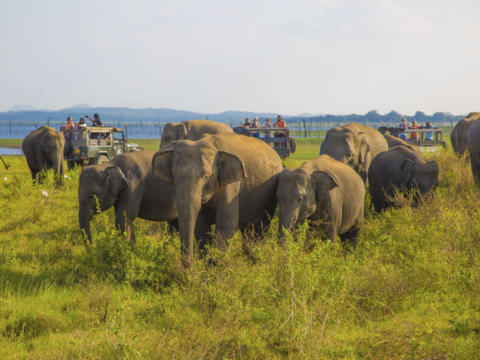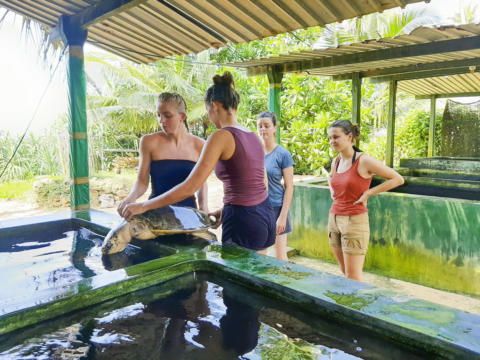Only 480€ per week!
Medical Project
Kandy - Sri Lanka
By joining the medical project in Kandy, Sri Lanka, you will be able to observe the patients at one of the oldest and the largest hospitals in Kandy!
You will also be visiting the highlands of Sri Lanka famous for its tea plantations. Work at a Sri Lankan Hospital, learn the medical system, medical techniques and procedures by observing alongside vastly experienced and knowledged hospital staff in one of the biggest hospitals in Kandy.
Program Description
After your introduction week, you will be observing patients alongside a doctor or a nurse at one of the oldest and largest hospitals in Kandy, Sri Lanka.
The fall of the Kandyan Kingdom in 1815, led to the establishment of Western (English) Medicine and initiation of Hospitals throughout the Island. Dr. John Davy was an army surgeon and physician to Governor Sir Robert Brownrigg from 1817 to 1819. He came to Kandy with the British Troops and lived next to Diyawadana Nilame resident in Malabar Street. (At present it is named as Anagarika Dharmapala Mawatha). A Military Hospital was built in a renovated existing building and was located at the site of the present “Kandyan Art Association”. Later it served both military and civilians, especially for Cholera and Smallpox.
After 1821, Indian labourers came to Sri Lanka for coffee and later tea enterprises. Civil hospitals were needed due to poor nutrition, Cholera and Malaria. Once the civil medical department was separated from the military service, Colonial Surgeons were appointed to Central Province. This medical Board appointed vaccination officers who were responsible for vaccinating the public against Smallpox. In 1861 there was an infectious disease hospital in Deyyannewela (the Smallpox Hospital). This pauper hospital was later expanded to become the General Hospital Kandy. One of the very first buildings of the Kandy Hospital was the Cholera ward in 1866.
Teaching Hospital Kandy with strong links to the University of Peradeniya, conducts undergraduate training programmes for the university students studying at the Medicine and Post Graduate Institute of Medicine (PGIM) which is a national institute attached to the University of Colombo. PGIM appoints post-graduate trainees, registrars and senior registrars to this hospital on a regular basis as this is one of the oldest hospitals which provides the entire range of medical and surgical specialities under the administration of a single institution. Teaching Hospital Kandy is a training centre for student nurses who are coming from the Nurses Training School in the Hospital. It also provides teaching facilities for foreign students who seek exposure on Tropical Diseases. This hospital has over 2200 beds.
By joining this project, your main task would be to observe or monitor the patients, treatments, techniques, etc. alongside the local staff working at the hospital.
Aims & Objectives
The project aims to give understanding and learning for participants interested in the field of medicine and get exposed to various methods of treating patients in need.
Schedule
Monday to Friday
The program functions from Monday to Friday and the normal hours at the hospital will be from 08.00 to 13.30. Working hours can be changed according to the medical department's requirement.
Note: This schedule can be changed and/or amended depending on weather conditions, local conditions and unforeseen circumstances.
Participant Criteria & Requirements
Standard Requirements
Minimum age: 18
Maximum age: –
Minimum English level: Basic
CRB required: On Signup
Passport copy required: On Signup
Resume copy required: On Signup
Required qualification: Yes
Additional Requirements
For this placement, it is a must that participants are Medical Students. You should get a prior confirmation from us 04 weeks before your arrival. You should email the following documents 04 weeks prior to your arrival.
- Detailed CV
- Certification letter from the University stating that you follow a medical degree.
- A letter from you (addressed to the Kandy General Hospital) requesting the hospital to grant permission for you to take part in the medical project.
- Participants above the age of 65 should have medical clearance.
Additional Equipment
A complete uniform set and a stethoscope should be brought with you.
Location
Kandy, the last royal capital of Sri Lanka is a major tourist destination. About 115 km from Colombo at 465 meters above sea level. Famous for the Temple of the Tooth and many other temples the city could be called the cultural capital of the island. This bustling market town is rich in cultural diversity and has plenty to offer to the tourists from songs dances and handicrafts to ancient temples and adventure activities. Kandy was a royal capital and the last stronghold of the Kandyan kings against foreign powers, holding out against them for about 300 years. The two main Buddhist Chapters are based here and formed the last center of independent Buddhist thought during colonial times.
About the Accommodation
You will be accommodated in one of our centers which are located 2-4 kilometers away from Kandy center. Furthermore, there is a refrigerator which you are welcome to use to store food and beverages.
Food Arrangements
You will be provided with three meals a day on weekdays and two meals per day on weekends. The meals are a mix of Western and Sri Lankan food, consisting mainly of vegetarian dishes including rice and vegetables. You can also eat out at any of the local restaurants.
Facilities
Our house is located 2 kilometers away from the city center, where you can find anything you might need.
The nearest ATM and supermarket are a 15-minute walk away from our accommodation.
Activities & Events
No scheduled activities outside the program.
Sights & Surroundings
The places to visit during your weekends or on your project holidays are the Royal Botanical Gardens, Knuckles mountain range, Udawatta Kele sanctuary, Hortons plains national park and the railway museum.
Transportation
From this location we do not provide free transport to other locations.
Quick Facts
Name: Democratic Socialist Republic of Sri Lanka
Population: 20 million
Capital: Sri Jayawardenepura Kotte and Colombo
Language: Sinhalese, Tamil
Currency: Sri Lankan Rupee (LKR)
Time zone: UTC +5:30
Country Information
Sri Lanka’s over 2000 years of history and culture can still be seen in every corner of its cities and the details of its ever-beautiful ancient temples. With eight UNESCO World Heritage sites and its short distances between the main sights, Sri Lanka is a country that, despite often being overlooked in itineraries, has left travelers filled with awe.
Visit the sacred home of the world’s oldest living tree in Anuradhapura, wander around the colonial architecture of Colombo, get sun-kissed at the untouched beaches that enclose the territory, snorkel in the crystal-clear waters, head to the hills for a cooler temperature and get surrounded by lush natural vegetation, visit two thousand year-old temples or get overawed at the sight of hundreds of elephants in Minneriya.
While traveling through Sri Lanka you will experience adventures from the highest and chilliest mountains like the famous Adam’s Peak – a stairway mountain considered sacred in three different religions, through the elephant shelters, to the most peaceful beaches up north near Trincomalee and their tiny- one floor- hostels facing the calm sea.
Climate
Sri Lanka is one of the best destinations to visit year-round as the rainy seasons hit the island in opposite locations at different times of the year. That being said, Sri Lanka is a country that can be visited if you know where to go in search for the best weather.
Southwest
The southwest monsoon hits between May and September and the dry season occurs from December to March.
North and coastal regions
The monsoon season happens between October and January while the dry seasons takes places between May and September.
Culture
Sri Lanka is known for its distinct cuisine, indigenous holistic medicines, cricket practices and prestigious export of tea, cinnamon and gemstones. Moreover, the country boasts of a rich artistic tradition which includes music, dance and the visual arts.
Sri Lanka has been shaped by many aspects. The first and most obvious being the heritage of Theravada Buddhism passed on from India. Furthermore, the colonial period left a big mark in the country’s traditions and culture, with British elements being featured in every corner as well as Dutch and Portuguese elements.
Sri Lanka, better known as the “nation of smiling people”, is a paradisiac island that Napoleon described as a world-like biodiversity in a tiny piece of land on the Indian ocean. Multicultural, multi-religious and multi-coloured country, formerly named Ceylon, is known for its delicious black tea, it’s heartwarming inhabitants and its history-filled corners.
The festival of Duruthu celebrates the Buddha’s first visit to Sri Lanka. During Duruthu, thousands of people attend colorful parades, which consist of three processions on the nights before the full moon. The processions consist of fireball performers, drummers, dancers, decorated elephants and the most important – a gigantic tusker treading a white carpet.
On April 13th or 14th Avurudda celebrates the Sinhalese New Year. According to Sinhalese astrology, the new year begins when the sun changes from Meena Rashi (Pisces) to Mesha Rashi (Aries).
During June the Poson Festival takes place on the full moon day of June and celebrates the arrival of Buddhism, which occurred when Arahat Mahinda, the son of the emperor of India, converted King Devanampiyatissa to Buddhism.
During October or November, Diwali the Festival of Lights is celebrated. Diwali is an ancient Hindu festival that signifies the victory of light over darkness, knowledge over ignorance, hope over despair, and good over evil. It is celebrated with millions of lights shining over houses, temples, and buildings. Diwali is celebrated between mid-October and mid-November, on the darkest, new moon night of Karitika.
In Sri Lanka, it is tradition to take an oil bath in the morning, wear new clothes, exchange presents and sweets and visit the Koil, a Hindu Temple. In the evenings, oil lamps are lit to invite the blessings from the goddess of wealth.
Transportation
Plane
Flying between major locations in Sri Lanka such as Galle, Colombo, Nuwara Eliya and others is possible with Aero Lanka and Srilankan Airlines. Moreover, Srilankan Airlines runs small seaplanes, which give you a great aerial view of the island.
Bus
Buses are a option to get around Sri Lanka, albeit quite uncomfortable. For instance, for less than a Euro you can get almost halfway around the island in a bus without air conditioning. Luxury buses with air conditioning also exist at a higher price which are still very inexpensive.
Train
Sri Lanka boasts of an extensive railway system that will get you almost anywhere around the country. Moreover, Sri Lanka is known for its picturesque scenery that can be best viewed in a train journey. In fact, there are observation carts in most trains for tourists that will allow you to better take in the beauty of your surroundings.
In most cases, getting around by train is the cheapest option. There are three classes: 1st, 2nd and 3rd class. In most Intercity and Express trains, however, only 1st and 2nd are offered. Do keep in mind that trains from one popular destination to another (i.e. Colombo – Kandy or Galle – Colombo) often get overbooked, so it is best to reserve a seat much in advance.





